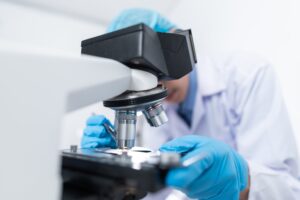

Close

6 minute read
On June 22, 2023, the FDA granted accelerated approval of ELEVIDYS (delandistrogene moxeparvovec-rokl), a gene therapy developed by Sarepta Therapeutics for the treatment of Duchenne muscular dystrophy (DMD) in patients 4-5 years old.
This approval is seen as a major victory for patients with DMD who have long awaited a novel treatment to give patients hope and will likely pave the way for more cell and gene therapies in the years to come. The path to approval, however, has been anything but smooth.
On April 13th, a Stat News article claimed that the FDA was initially against the approval of the ELEVIDYS BLA. It has been widely reported that it was the intervention of Peter Marks, a top agency official, that narrowly paved the way for ELEVIDYS approval.
Soon after on May 12th, the FDA Advisory Committee (AdComm) of the FDAs’ Cellular, Tissue, and Gene Therapies group voted with a narrow 8-6 vote in favor of recommending accelerated approval of ELEVIDYS for the treatment of ambulatory patients with DMD who have a confirmed mutation in the DMD gene. Even after this decision, the FDA delayed its final approval until late June.
This roller-coaster of approval was not simple or straightforward. However, there are important lessons to glean from this process as it relates to future gene and cell therapy approvals.
In observing the path to FDA approval of Sarepta’s ELEVIDYS, three key lessons stood out to me about the path forward for similar drug development and approval.
One of the most compelling aspects of the recent FDA approval meeting was the fact that special emphasis was placed on hearing the patient voice.
Christopher “Buddy” Cassidy, the AdComm patient representative and a patient with DMD himself, offered incredible insights into what DMD patients live through. He shared videos highlighting positive patient cases, provided a very compelling testimonial from a sufferer of DMD, and highlighted the absolute urgency of advancing first-in-line treatments for incurable diseases.
A difficult ethical question came up during this review: “What if this treatment renders the non-responsive patient ineligible for further treatment, where they might otherwise respond to potential treatments that may be ‘coming down the pike’ with approvals in the near future?”
Here, the response was clear: “Time is muscle”, and the patient cannot wait.
Trial endpoints must collect and consider the patient experience and qualitative treatment effects. In a case where certain patients have remarkable, outsized benefits, it would be unjust to deprive patients of this potential treatment.
2. The Data Is Messy and ‘Non-Homogeneous’
I was struck by how challenging the work of this AdComm was, where patients clearly respond differently to various treatments–an effect that can muddy the water when trying to decipher patient responses.
This seemed equally true of standard-of-care treatments, where positive responses are temporary. While the outcome cited this as a concern, there is often little that can be done about this. In the race to provide game-changing therapeutics, companies often don’t have the luxury of crystal-clear outcomes where patients experience a uniform response, and where non-responders can be identified in advance.
Control, control, control. Thorough process controls, analytical characterization, consistent method application, and consistent clinical dosing regimens are all especially critical when dealing with non-homogeneous populations. When dealing with such patient and outcome variability, the absence of such controls makes their interpretation of results far more challenging.
3. Surrogate Biomarkers Can Work
Sarepta took a unique approach to assessing the efficacy of ELEVIDYS. A bit of background: dystrophin is a protein that is essential for muscle function, and patients with DMD have a mutation that prevents them from producing dystrophin.
Sarepta used a biomarker called micro-dystrophin–a novel, engineered protein that differs from endogenous shortened forms of dystrophin in patients with DMD. ELEVIDYS is designed to deliver a functional version of the dystrophin gene to muscle cells, which can restore dystrophin expression.
Ultimately, the AdComm leaned toward agreeing that ELEVIDYS was “reasonably likely to predict clinical benefit” in support of the BLA for accelerated approval.
Here, the AdComm was unanimous in its belief that more long-term follow-up data is needed to assess the safety and efficacy of ELEVIDYS. Sarepta is currently conducting a long-term study of the therapy, and the results of this study will be important in determining whether ELEVIDYS can be a long-term treatment option for patients with DMD.
Overall, patients, caregivers, and cell and gene therapy researchers all can rejoice at this approval. It is a significant milestone in the development of gene therapies for rare diseases, and a major step forward in the fight against DMD.
ELEVIDYS is the first gene therapy to be approved for the treatment of DMD, the first gene therapy to be approved using a surrogate endpoint, and a hopeful sign for the future of gene therapy for other rare diseases.
Duchenne muscular dystrophy (DMD) is a rare genetic disorder that causes progressive muscle weakness and wasting, typically impacting boys in their childhood. It is caused by a mutation in the DMD gene, which codes for the dystrophin–a protein that helps to keep muscle cells healthy and strong. Without dystrophin, muscle cells become weak and eventually die.
Symptoms of DMD can include muscle weakness, difficulty walking, and falls. As the disease progresses, patients may experience difficulty breathing, swallowing, and heart problems. DMD is currently incurable, but physical therapy and medications, such as corticosteroids, can help control symptoms and improve quality of life.

Zeid Barakat is a Partner at Scimitar Inc., a Management Consulting firm that focuses on life sciences, offering deep experience in company operations, and in ways to transform organizational speed and productivity.
If you would like to learn more write to Zeid Barakat at
[email protected] or contact him on





